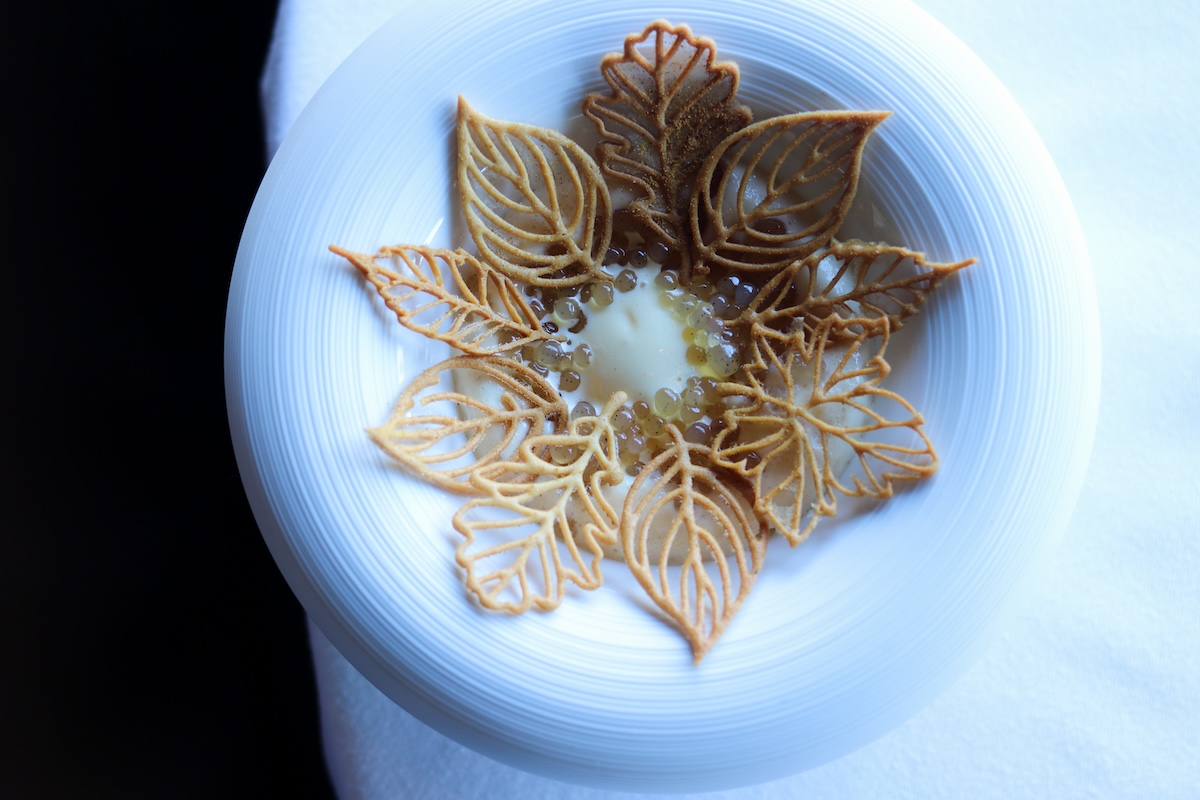Today’s modern fine dining restaurant eschews the classic white linen and stuffy service in favor of something else, something casual yet refined where traditional protocol gets pushed aside. In the current hospitality landscape one may pay fine dining prices, sometimes without realizing you’re indulging in a fancy restaurant. With the new model, in some instances fine dining can be an everyday thing, rather than only for special occasions.
At least that’s Syd Younggreen and chef Brian De Souza’s goal with their restaurant The Regular in Downtown Denver. The couple aim to bring the elegance of their first concept, The Guest, into a fine dining, yet causal setting. Younggreen said in the past, some places she’s been to feel more like church and can be intimidating. With The Regular, the owners want to change that.
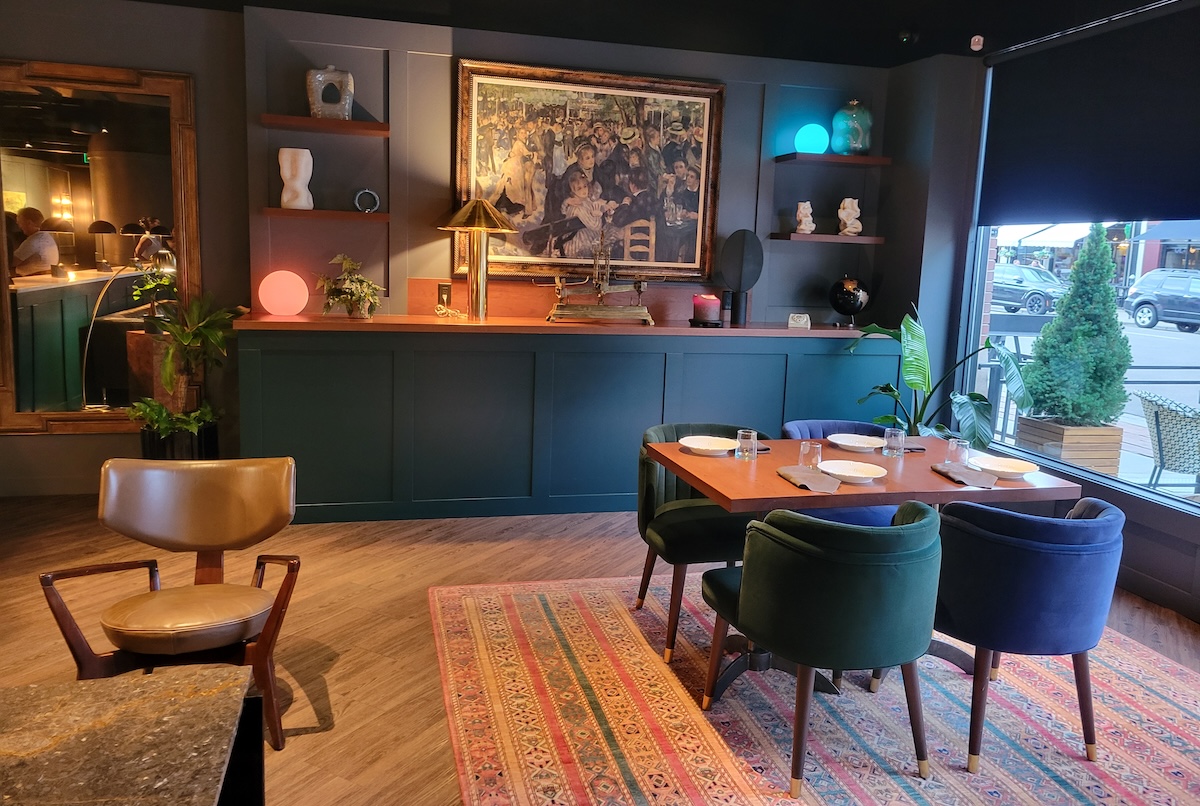
“When I think about old school fine dining I think of white tablecloths and formal service where all the moments are perfect,” said Younggreen. “There is something about it that’s cool and traditional, but it’s a little stuffy for the modern person.”
Her target diners tend to be younger, in their 20s, 30s, and 40s. Today’s eater, she added, doesn’t mind spending good money. However, they want to have fun and not feel burdened by making a wrong move. For example, wrong pronouncements, table settings in the wrong place, or even asking questions about what certain menu items are. It all be intimidating in upscale operations.
Saying the wrong thing and having questions proves especially true at The Regular. Here the menu focuses on chef De Souza’s Peruvian heritage with dishes such as Pan-Seared Kanpachi ($48), the traditional Peruvian soup Chupe ($58), and Chorito a la Chalaca ($16). These may literally be foreign to a diner, and the team wants guests to feel comfortable asking about them.
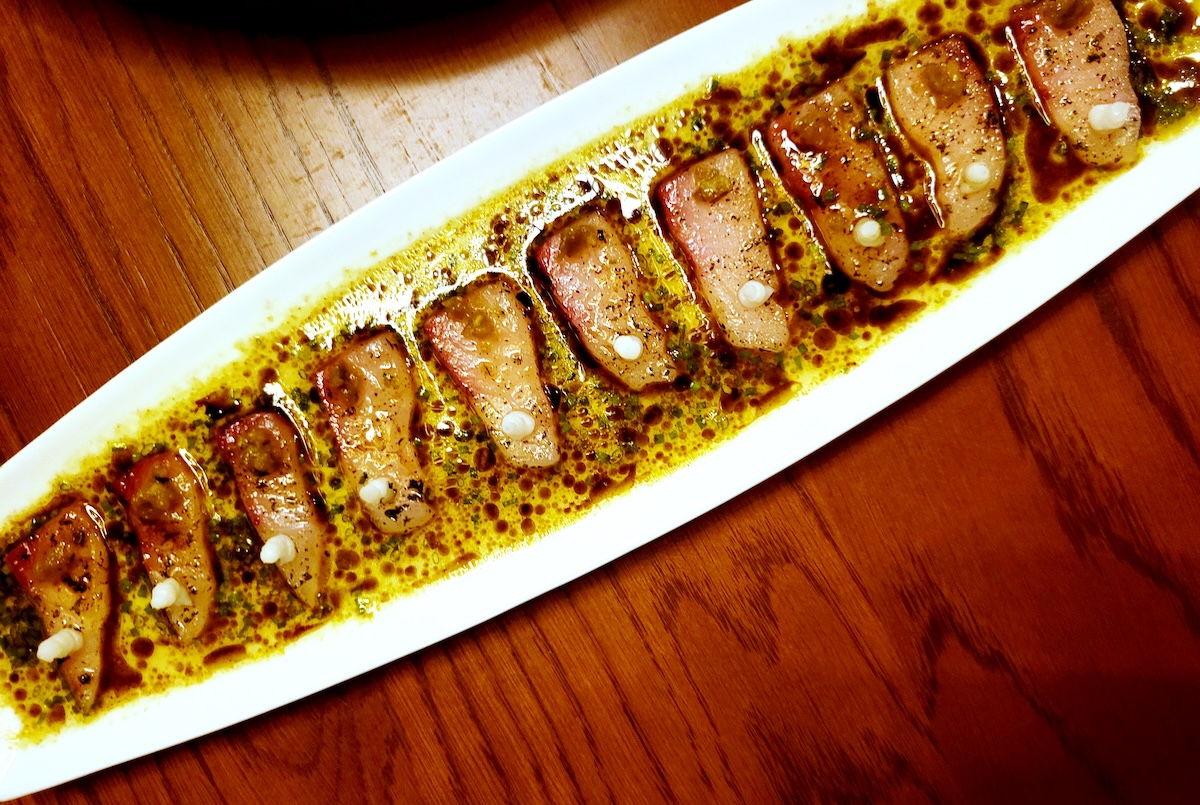
Younggreen, who handles front of house and is also the pastry chef, said one major goal is to give the diner the feeling of being a regular. This, she added, can help enhance an emotional connection reaching beyond the food.
“The service is friendly and informal, and we encourage [the staff] to let their personalities shine through,” Younggreen explained. “It makes people want to come back and see that same server again.”
It’s not just The Regular adopting a more casual fine dining experience. Take a look at hot spots such as the newly Michelin-starred Alma Fonda Fina. Hospitality at chef Johnny Curiel’s LoHi Mexican restaurant remains a major part of the experience. The service even goes beyond his expertly plated dishes such as Birria de Borrego ($41), Flautas De Amarillo ($17), and Aguachile De Chile Fresno ($19).
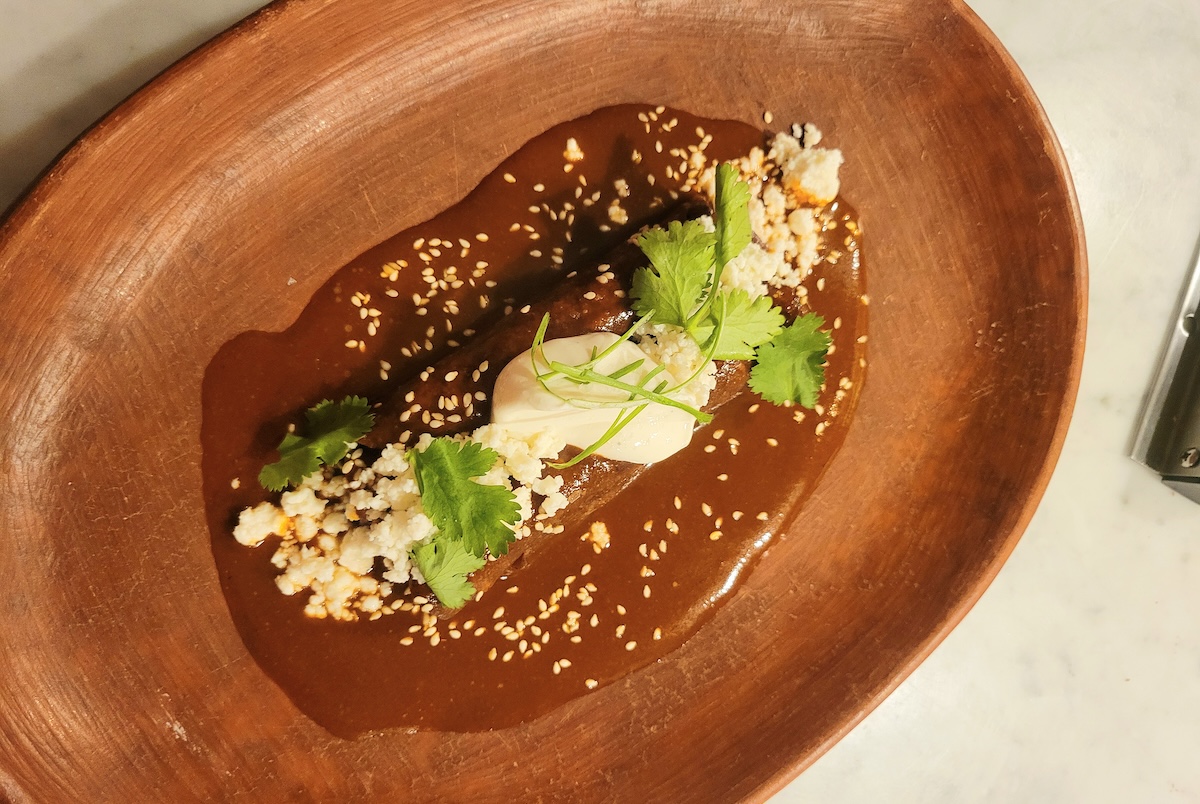
At Kelly Whitaker’s The Wolf’s Tailor, also Michelin starred and award winning, no table clothes weigh down the scene, and the service balances skill with individual personalities. The tasting menus run $160 to $185, before beverages. His other lauded spot Brutø costs about the same and also only does a chef’s choice dinner. While this setting feels more intimate thanks to the horseshoe counter with the kitchen as the stage, it’s another example of fine dining without upscale protocols.
One could also put the 10-year-old Mercantile Dining & Provisions, which balances day and night service, going from casual to casually formal. At night one can get Smoked Heirloom Corn Risotto ($21.21), Prime Niman Ranch Strip Loin ($56.56), and a charcuterie board ($29.29). Then during the day items such as Prime Short Au Jus ($21.21) and the Kvaroy Salmon Bowl ($21.21) are served in a more laid back environment.
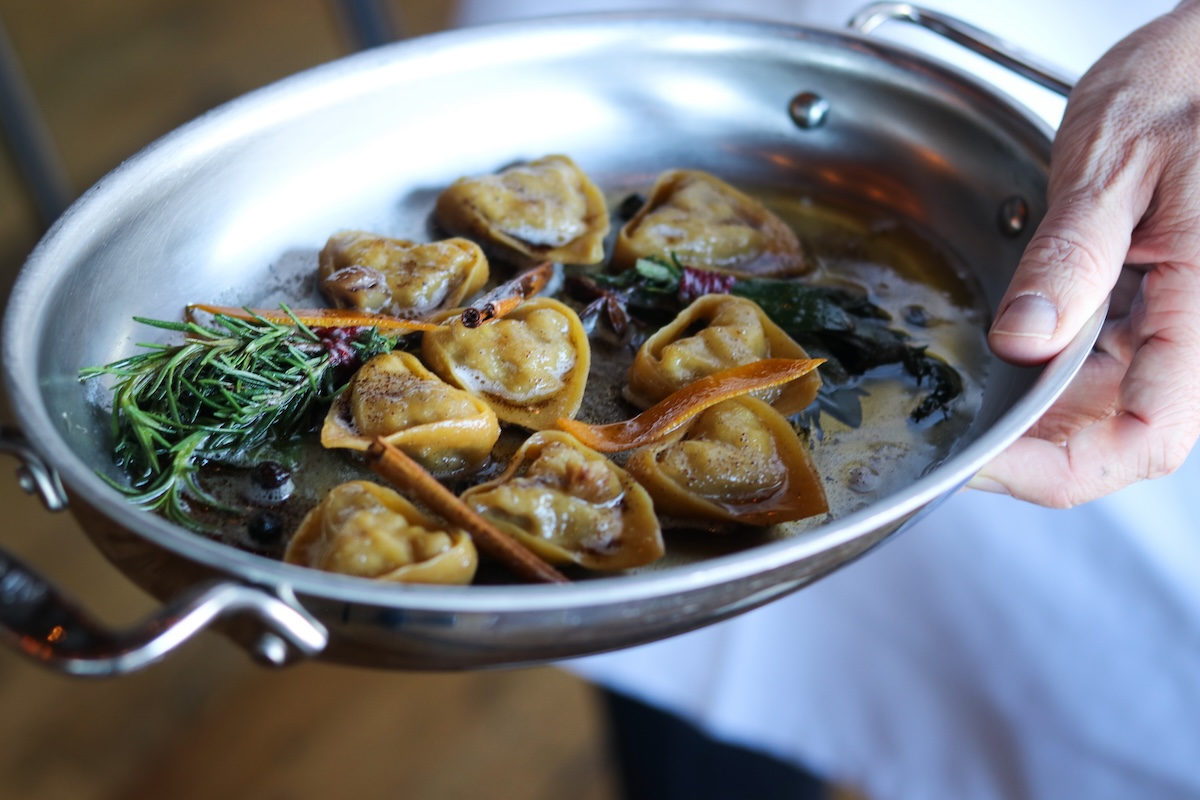
Not that traditional fine dining no longer matters. Going out to eat at a place with impeccable service, dialed in dishes, and the sense of your money going beyond the plate to create a certain experience remains important. We need places such as Frasca Food and Wine in Boulder and Barolo Grill in Denver.
“Barolo is fine dining on every level, except for the casual side of not wearing a tie or keeping up with the New York style of fine dining,” said Ryan Fletter, owner of the Michelin-recommended Barolo Grill. He said there’s a demand for upscale dining like this. Especially for a birthday experience, a graduation, and other celebratory events. “The young people want to dress up, they are excited to come in and people equate [dressing up for dinner at Barolo] to a fancier experience.”
In Boulder Frasca Hospitality co-owner and sommelier Bobby Stuckey had a similar sentiment, mirroring Fletter’s take on being a special occasion restaurant. The two spaces also share a similar evolution.
When Barolo opened in 1992 it was far more casual, taking cues from the classic Italian tavern style. Fletter started working there in 1994, eventually buying the place in 2015. Over the decades he watched and helped it grow into the fine dining experience it offers today.
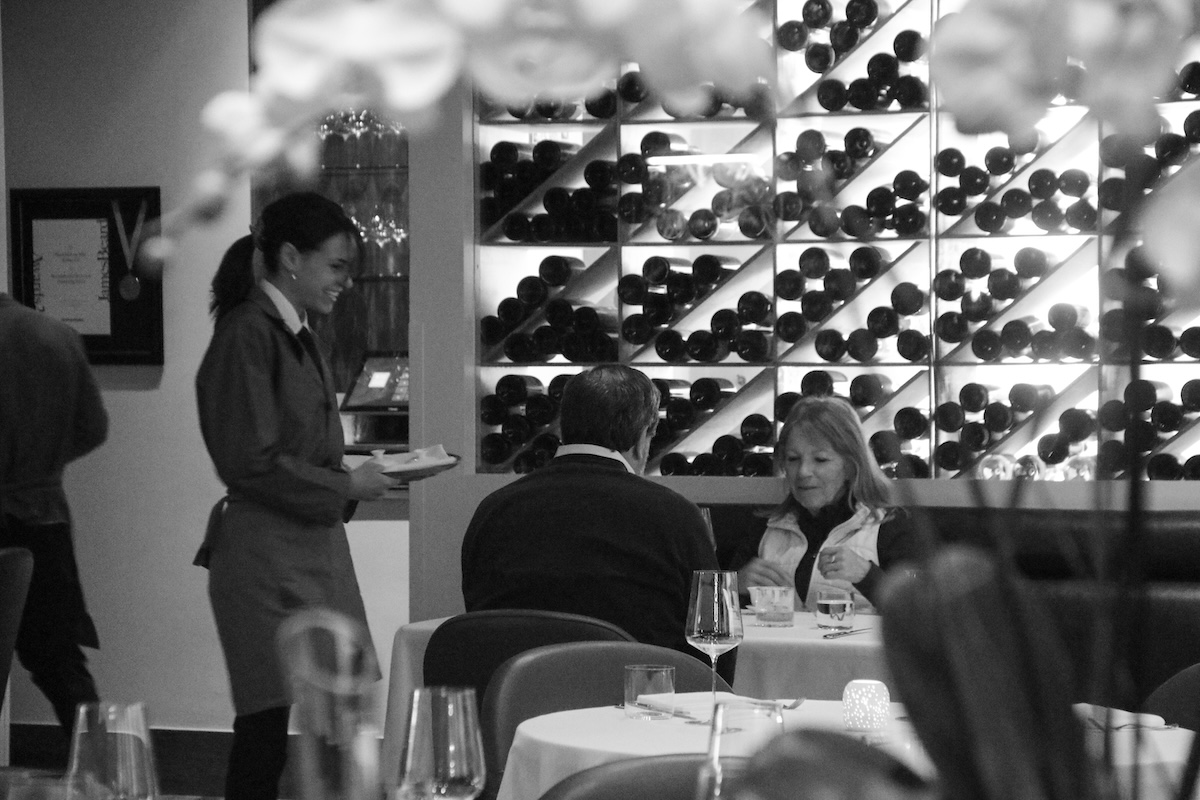
At Frasca, which Stuckey and his partner Mackinnon Patterson opened in 2004, the idea was more ambitious trattoria than fine dining destination. Now, with a Michelin star, a larger space, and fewer tables, Stuckey has achieved the top level. As a fan of fine dining, going back to working at Aspen’s the Little Nell, it was always a goal.
“There are so many more different expressions of fine dining and elevated dining than when we moved here 20 years ago, it was a different landscape,” said Stuckey. “You can have something like Frasca, using Frette linens and hand-ironing every piece of linen, or you have something exciting like Beckon, that’s just a beautiful counter.”
Frasca serves tasting menus ranging from $150 to $215, with wine pairings and beverages available to add on. At Barolo there’s a four-course chef’s tasting menu option for $95, but diners can also order a la carte. Think Barolo-style braised duck ($39), Bresaola ($23), and ravioli stuffed with lobster ($38).
Given today’s wide range of restaurants, there’s no correct answer when it comes to what fine dining really is. The cuisine ranges from Mexican to Italian to French and beyond. Moreover, the new fine dining leans toward a choose-your-own adventure approach. Do you want to wear yoga pants and sample high-end Peruvian fare? Or, don a beautiful dress and heels for a night of prestigious service? It’s up to guests to decide.
Overall, the prices remain similar. The food proves equally great. Plus all of these have a form of hospitality worth experiencing depending on the occasion. That’s the joy of fine dining today, it’s as unique as the diners.

